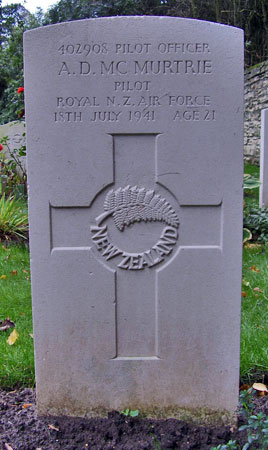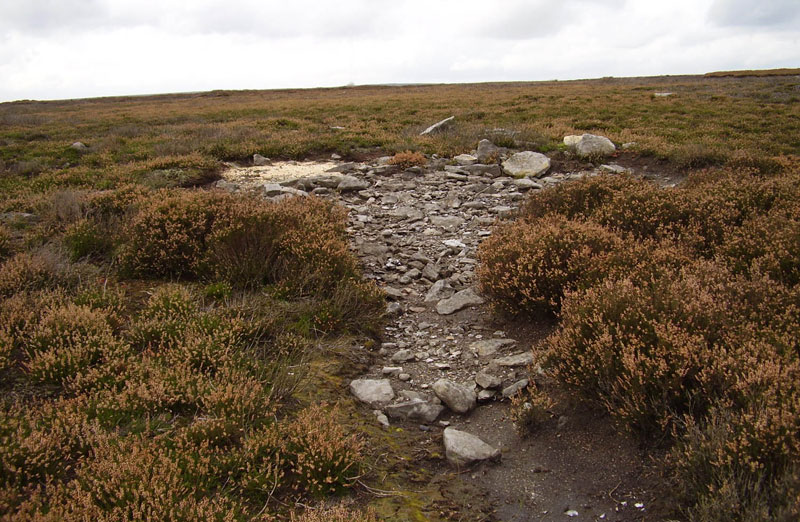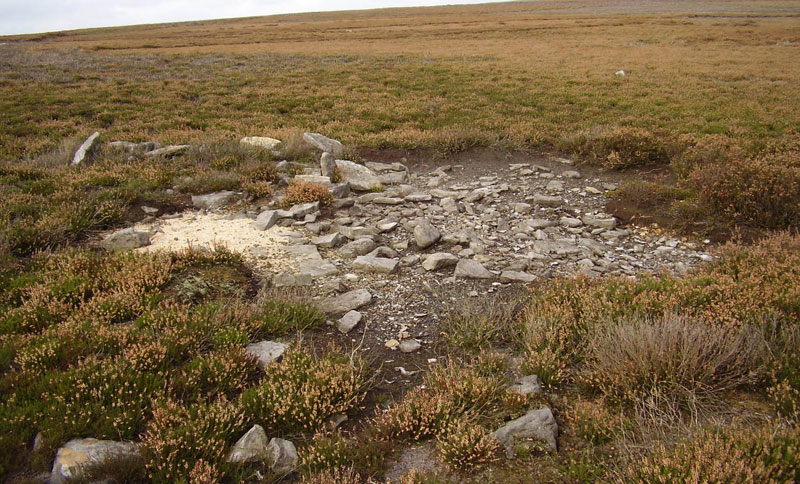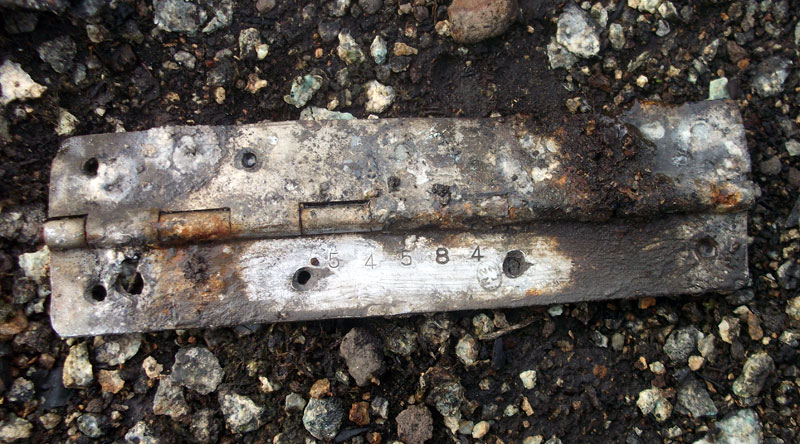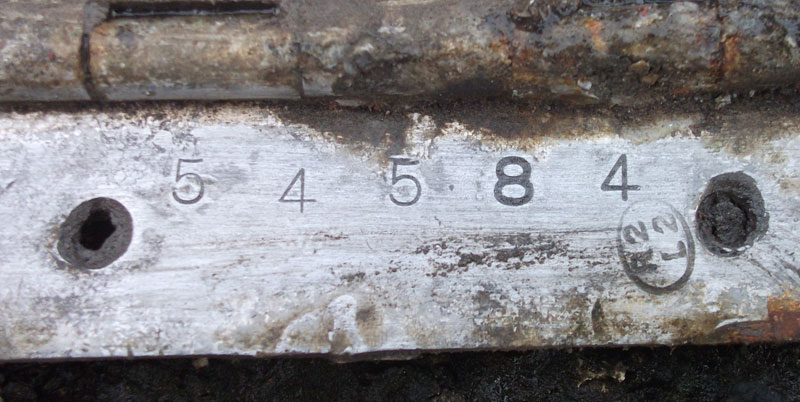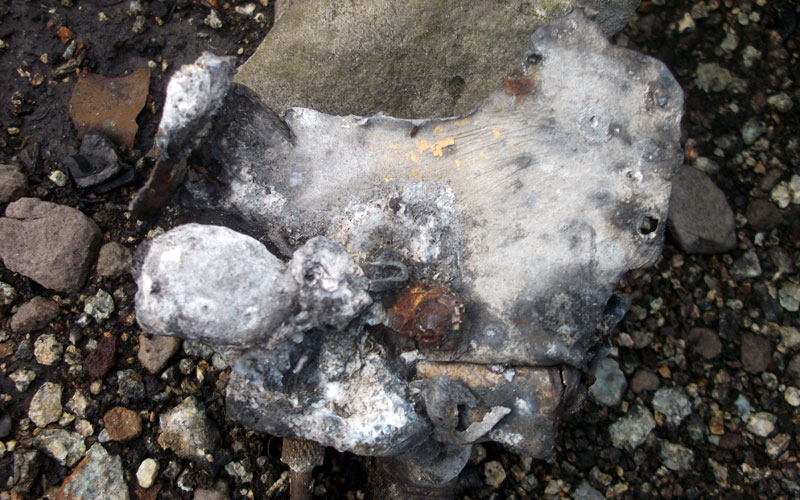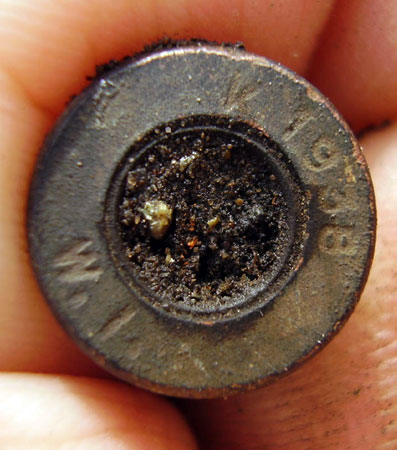During the early hours of 18th July 1941 the pilot of this 54 Operational Training Unit Blenheim was tasked with flying solo and to undertake a searchlight homing exercise. He took off from Church Fenton at around 03.20hrs and appears then to have been unwittingly vectored over the North Yorkshire Moors and Cleveland Hills by a ground-based controller in error. The ground-based controller gave pilots the wrong location to vector toward. This and at least one other aeroplane from the same unit circled for a while looking for the searchlight beams (which did not exist). Blenheim L8729 flew into high ground at an area known as Coniser Howl, between Bransdale and Bilsdale, at 04.35hrs. The pilot was sadly killed and the aircraft was totally destroyed by an intense fire. The precise time was known because the aeroplane's clock and also the pilot's wrist watch were located and both had stopped at this time. The pilot's body was recovered and taken to Catterick airfield to await an inquest and then was returned to Church Fenton for burial at their local church burial site. This aircraft crashed only five minutes after Blenheim L1449 struck the moorland a few miles further north with the pilot having also been vectored over the wrong area. The wreckage of L8729 was later taken off the moor and down into Bilsdale past the Sun Inn.
Blenheim L8729 was built to contract 551920/37 by Rootes Securities Ltd at Speke and was awaiting collection in August 1939, it was then delivered to 64 Squadron who were based at Church Fenton later in the month. 64 Squadron converted to Spitfire MkIa's in April 1940 and on 18th April 1940 they were detached to Catterick airfield and took L8729 with them for transfer to 219 Squadron who were in residence at Catterick by that date. Following a minor accident at Catterick in May 1940 Cat.R/FA damage was recorded and the aircraft was repaired on site by a team from The Bristol Aeroplane Co. Ltd. whose job it was to repair Blenheims at their operating stations. No date is known for the completion of these repairs but the aircraft was returned to 219 Squadron when this was done. 219 Squadron moved to Redhill on 12th October 1940 and 600 Squadron moved in to Catterick from Redhill on the same day and L8729 was taken on charge by them at Catterick. 600 Squadron themselves ceased operating Blenheims in February 1941 and this aircraft was transferred to 54 O.T.U. at Church Fenton. It was destroyed on 18th July 1941 with Cat.W/FA damage being the damage assessment for the paperwork. An entry in 54 OTU's ORB simply states "P/O McMurtie killed in Blenheim L8729. Crashed close to Blenheim L1449."
Pilot - P/O Alexander Douglas McMurtrie RNZAF (NZ.402908). Aged 21. Buried Kirkby Wharfe Cemetery, North Yorkshire.
P/O McMurtrie and his gravestone at Kirkby Wharfe. He was from Lower Hutt, Wellington, New Zealand. At the time of his death he had a total 174 hours flying to his name, 97 hours of which were flying solo.
I visited the area of this crash many times before I actually located the site in August 2003. Having talked to (the now late) Mr William Ainsley of the Sun Inn for some of the information on
this page he also gave me precise directions to locate the site. A fire destroyed the aircraft and a small scar on the moor still remains, this has a lot of melted aircraft in it as well as tiny
fragments of glass, bakerlite and other aircraft items. A small memorial was constructed at the site in 2004.
An example of what is in this scar on the moorland.
This was the only item with a part number that I could find at the crash site in November 2014. The lettering "R2" in the circle is the stamp that Rootes Securities used to mark their factory
produced items and with Blenheim L8729 being built by Rootes this is a good identification piece. As the other Blenheims in this area (L1117 and L1449) were not made by Rootes it confirms this
site as being L8729.
This Blenheim should have been painted yellow on the underside because it was a training aircraft. This fragment at the crash site still bares this yellow paint.
54 O.T.U. must have been using up old stock .303 bullets in 1941 as many cases at the crash site are pre-ww2 examples.


